Inspiration and wisdom absorbed from the best professionals in the trade have always been the great source of motivation and consideration of the basics. Today we add the new set of our favorite wise thoughts and ideas to Tubik Quotes Collection. They are all based on the great practical experience of well-known experts in the sphere of design and this time are concentrated on the important issues and tips of user-centered interaction design. Let’s get inspired by the masters!
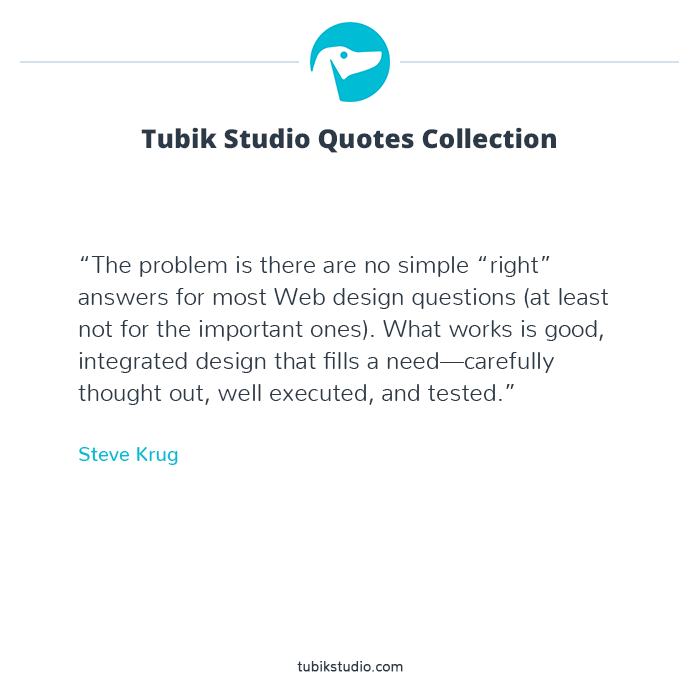
“People should never feel like a failure when using technology. Like the customer, the user is always right. If software crashes, it is the software designer’s fault. if someone can’t find something on a web site, it is the web designer’s fault… The big difference between good and bad designers is how they handle people struggling with their design. Technology serves humans. Humans do not serve technology.” (Joshua Porter)
“Your app might be a technological marvel, but don’t forget that it’s people who need to interact with it.” (UXPin team)
“People ignore design that ignores people.” (Frank Chimero)
“Feedback is the heart of interaction. If user interaction is a conversation between your user and the product, then your product better participate in a friendly, interesting, and helpful manner.” (UXPin team)
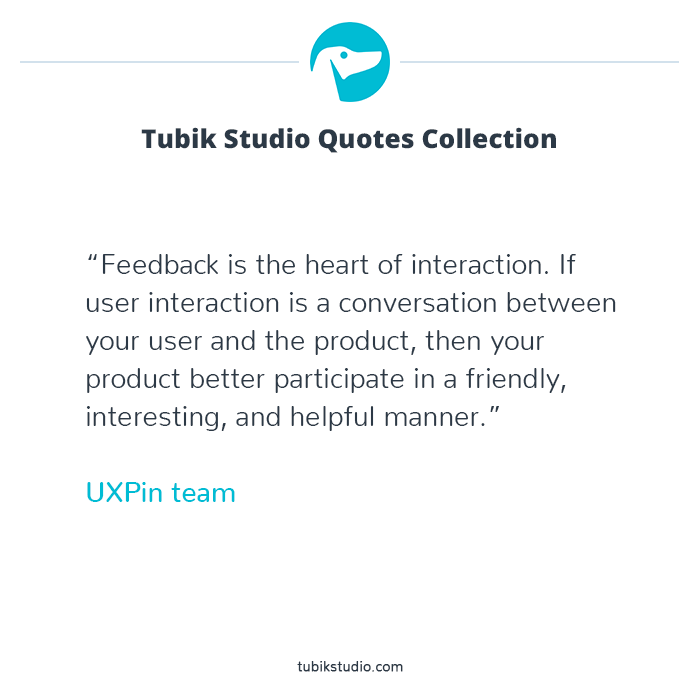
“In an ideal world, a user would remember every function after only a single use, but we do not live in idealism. The reality is that familiarity and intuition must be consciously designed into the interface.” (UXPin team)
“Our opportunity, as designers, is to learn how to handle the complexity, rather than shy away from it, and to realize that the big art of design is to make complicated things simple.” (Tim Parsey)
“It is easy to fail when designing an interactive experience. Designers fail when they do not know the audience, integrate the threads of content and context, welcome the public properly, or make clear what the experience is and what the audience’s role in it will be.” (Edwin Schlossberg)
“Good design is a lot like clear thinking made visual.” (Edward Tufte)
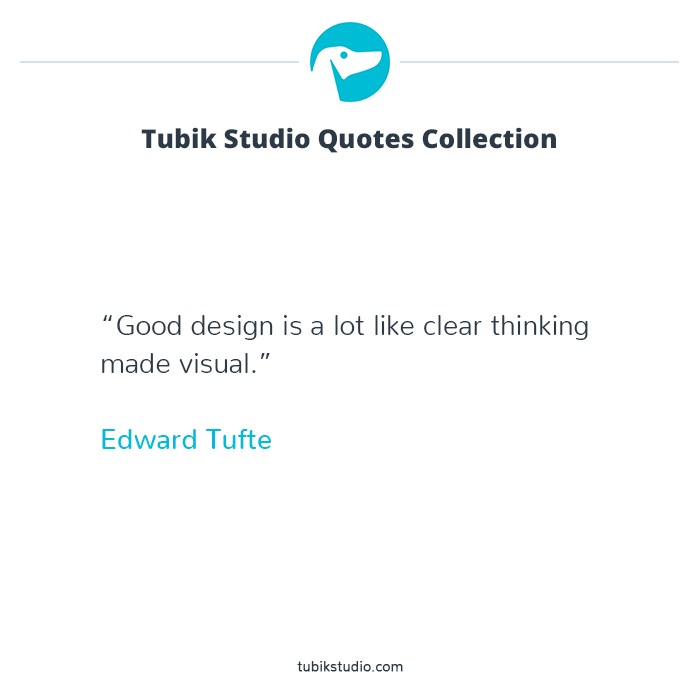
“HCI draws on many disciplines, as we shall see, but it is in computer science and systems design that it must be accepted as a central concern. For all the other disciplines it can be a specialism, albeit one that provides crucial input; for systems design it is an essential part of the design process. From this perspective, HCI involves the design, implementation and evaluation of interactive systems in the context of the user’s task and work.” (Alan Dix, Janet E. Finlay, Gregory D. Abowd, Russell Beale)
“To design is to communicate clearly by whatever means you can control or master.” (Milton Glaser)
“Don’t make something unless it’s both necessary and useful. But if it is both necessary and useful, don’t hesitate to make it beautiful.” (Josh Porter)
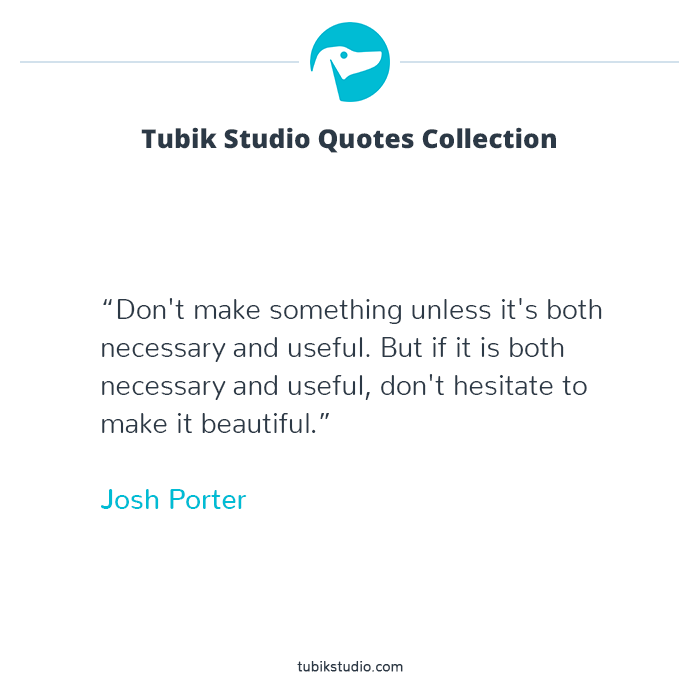
“The details are not the details. They make the design.” (Charles Eames)
“Good design is design that changes behavior for the better. I think it needs to take into account the context of the environment, of the human condition, the culture, and then attempt to make the things you do—make us do them better, make us do better things. It encourages us to change the way that we live.” (Jon Kolko)
“It’s not enough that we build products that function, that are understandable and usable, we also need to build products that bring joy and excitement, pleasure and fun, and yes, beauty to people’s lives.” (Don Norman)
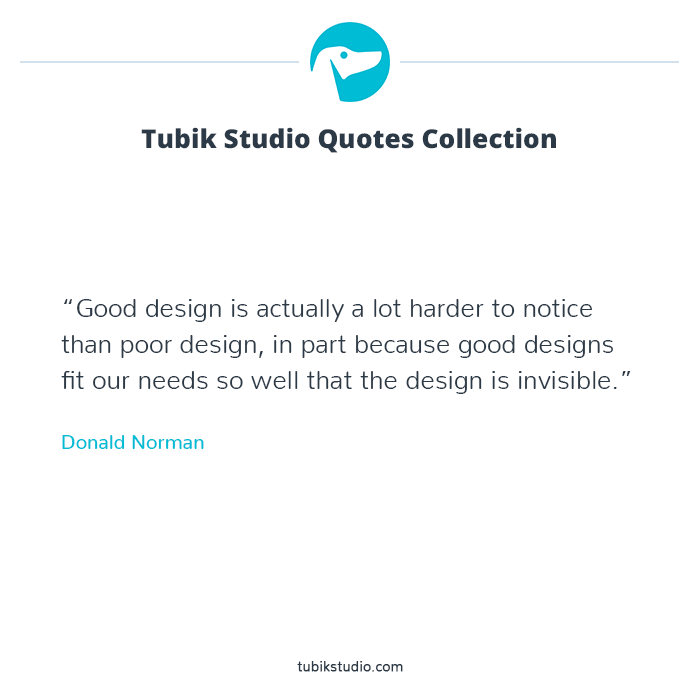
“Good UI design gives users a comprehensible sense of power that consistently helps them feel in control.” (Jim Nielsen)
“In situations of stress, people will be less able to cope with complex problem solving or managing difficult interfaces, whereas if people are relaxed they will be more forgiving of limitations in the design. This does not give us an excuse to design bad interfaces but does suggest that if we build interfaces that promote positive responses – for example by using aesthetics or reward – then they are likely be more successful.” (Alan Dix, Janet E. Finlay, Gregory D. Abowd, Russell Beale)
“When we interact with computers, what are we trying to achieve? Consider what happens when we interact with each other – we are either passing information to other people, or receiving information from them. Often, the information we receive is in response to the information that we have recently imparted to them, and we may then respond to that. Interaction is therefore a process of information transfer. Relating this to the electronic computer, the same principles hold: interaction is a process of information transfer, from the user to the computer and from the computer to the user.” (Alan Dix, Janet E. Finlay, Gregory D. Abowd, Russell Beale)
“Interaction is the essence of all user experiences. It is the conversation between your product and your user, and if the conversation is boring, your user will leave and talk to someone more interesting.” (UXPin team)
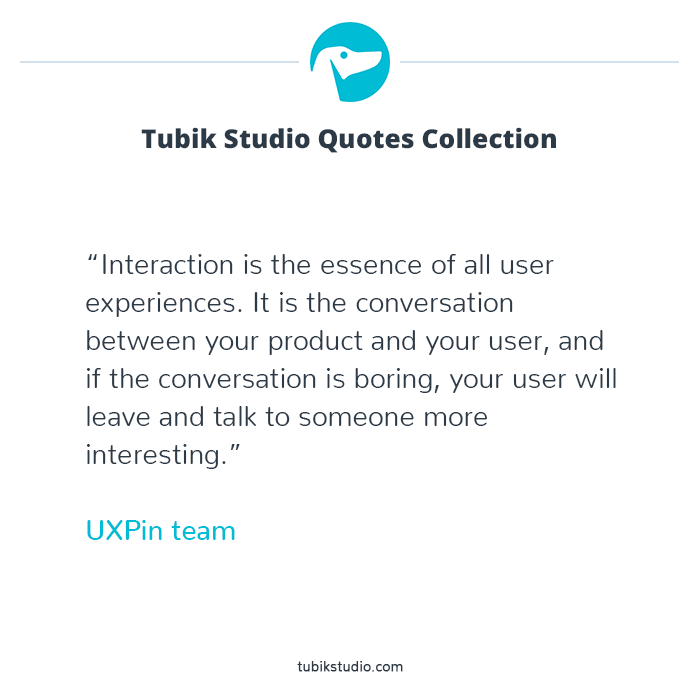
“Interaction design isn’t about how interfaces behave, it’s about how people behave, and then adapting technology accordingly. It’s a two-part challenge: first, you must know your target users on a level that reveals what they like and what they expect; second, you must figure out how to satisfy those needs given your technological constraints.” (UXPin team)
“To our human minds, computers behave less like rocks and trees than they do like humans, so we unconsciously treat them like people…. In other words, humans have special instincts that tell them how to behave around other sentient beings, and as soon as any object exhibits sufficient cognitive function, those instincts kick in and we react as though we were interacting with another sentient human being.” (Alan Cooper)
“If we want users to like our software we should design it to behave like a likeable person: respectful, generous and helpful.” (Alan Cooper)
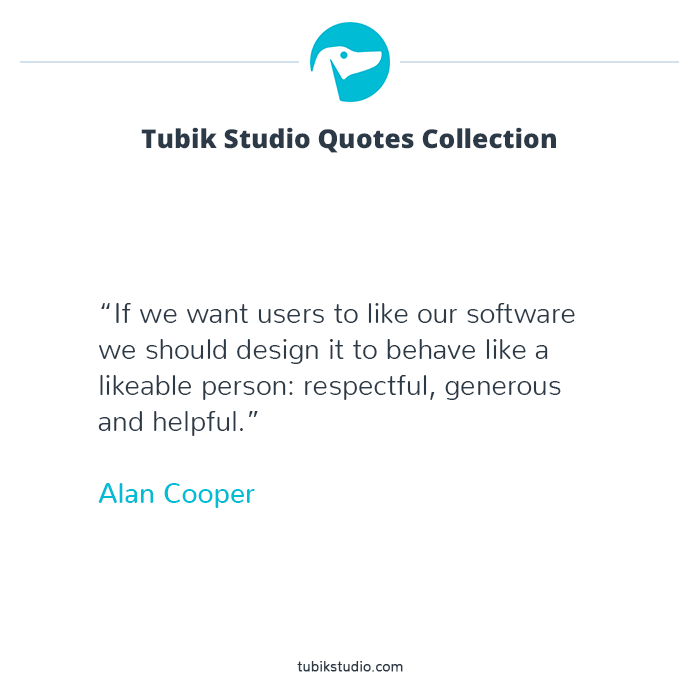
“A powerful tool in the early stages of developing scenarios is to pretend the interface is magic. If your persona has goals and the product has magical powers to meet them, how simple could the interaction be? This kind of thinking is useful to help designers look outside the box.” (Alan Cooper)
“User-centered design means understanding what your users need, how they think, and how they behave – and incorporating that understanding into every aspect of your process.” (Jesse James Garrett)
“As much as we may want to withdraw into a world of pure problem solving, we have to acknowledge that the most successful architectures are the ones you can actually convince someone to implement.” (Jesse James Garrett)
“Designers shooting for usable is like a chef shooting for edible.” (Aarron Walter)
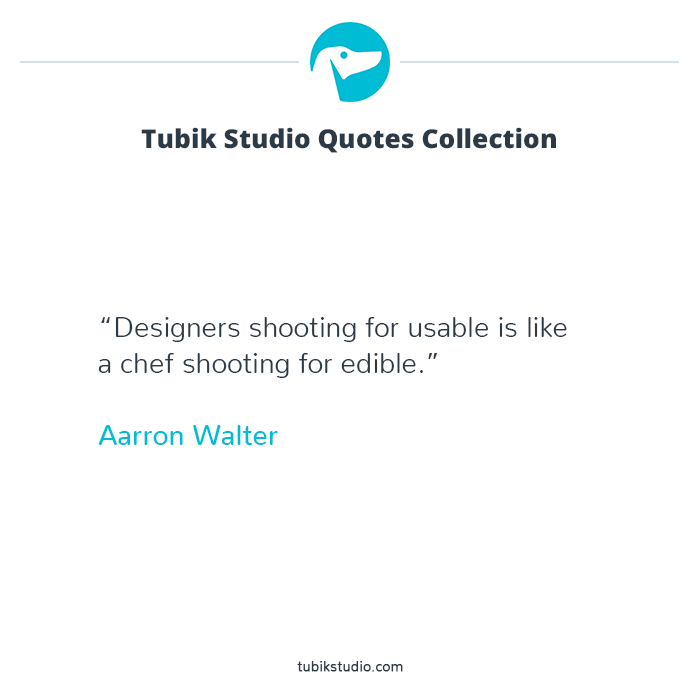
“Problems with visual design can turn users off so quickly that they never discover all the smart choices you made with navigation or interaction design.” (Jesse James Garrett)
“Good design, when it’s done well, becomes invisible. It’s only when it’s done poorly that we notice it. Think of it like a room’s air conditioning. We only notice it when it’s too hot, too cold, making too much noise, or the unit is dripping on us. Yet, if the air conditioning is perfect, nobody say anything and we focus, instead, on the task at hand.” (Jared Spool)
“Get closer than ever to your customers. So close that you tell them what they need well before they realize it themselves.” (Steve Jobs)
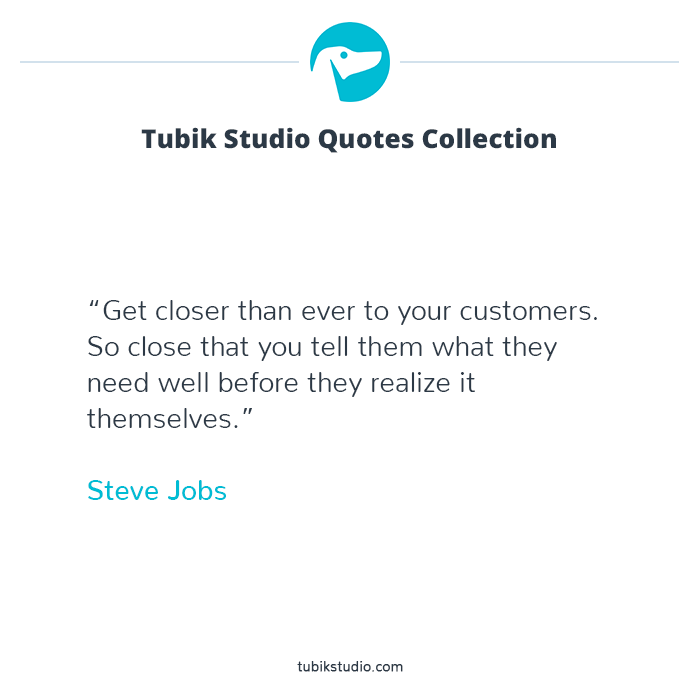
“Beauty and brains, pleasure and usability – they should go hand in hand.” (Donald A. Norman)
“To design an easy-to-use interface, pay attention to what users do, not what they say. Self-reported claims are unreliable, as are user speculations about future behavior.” (Jakob Nielsen)






